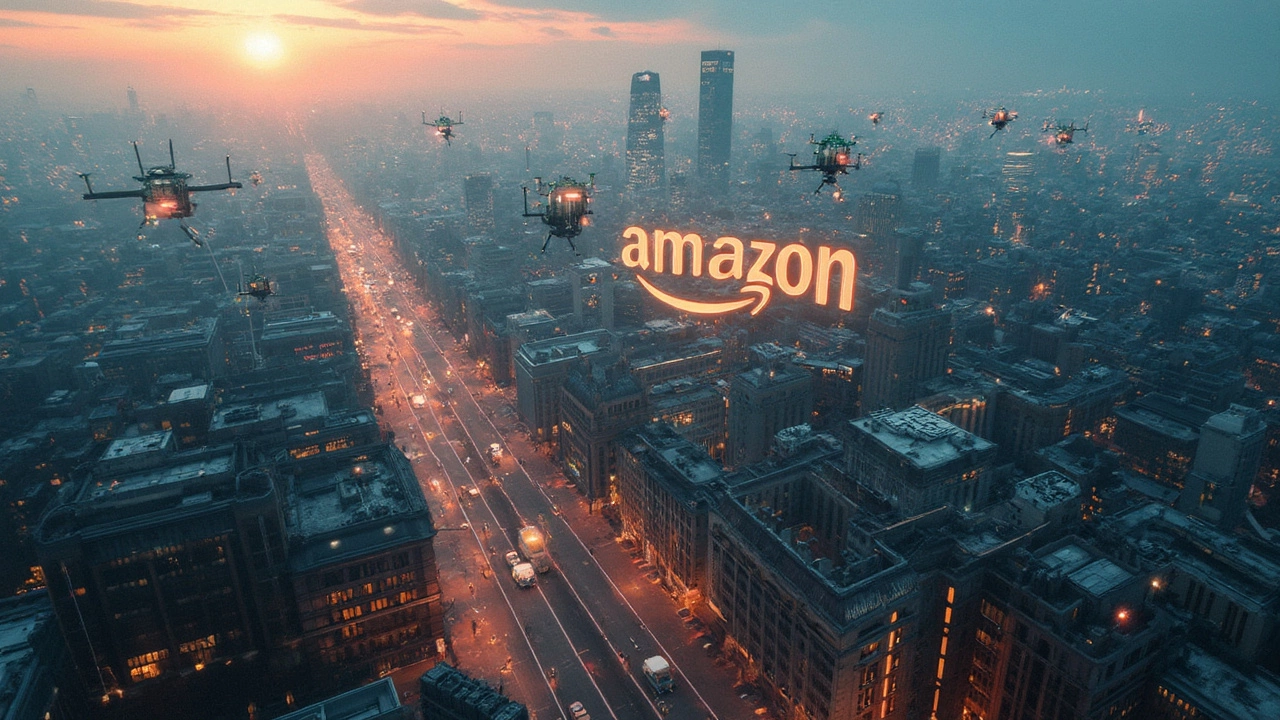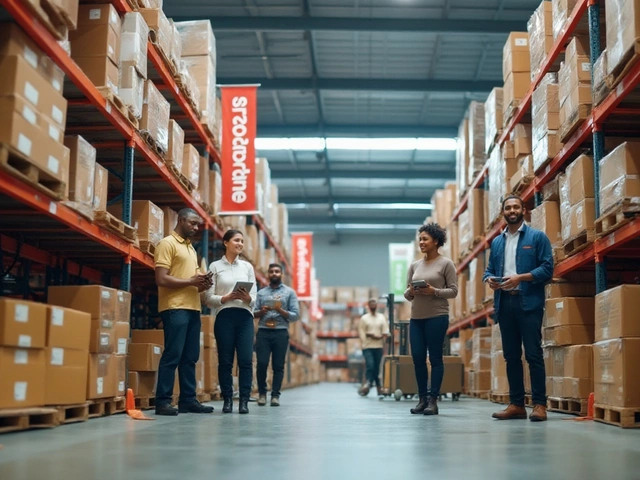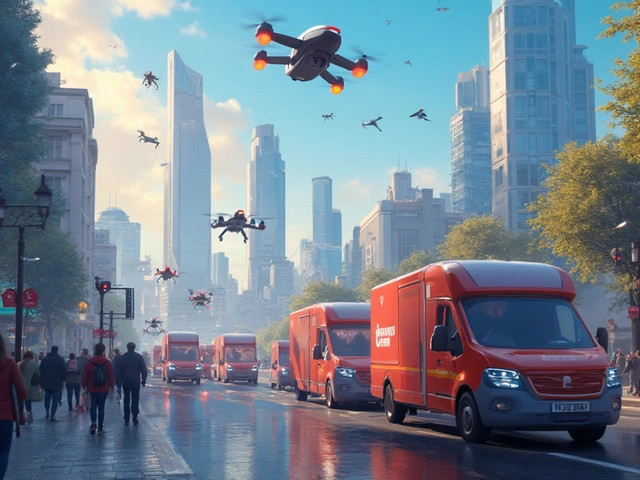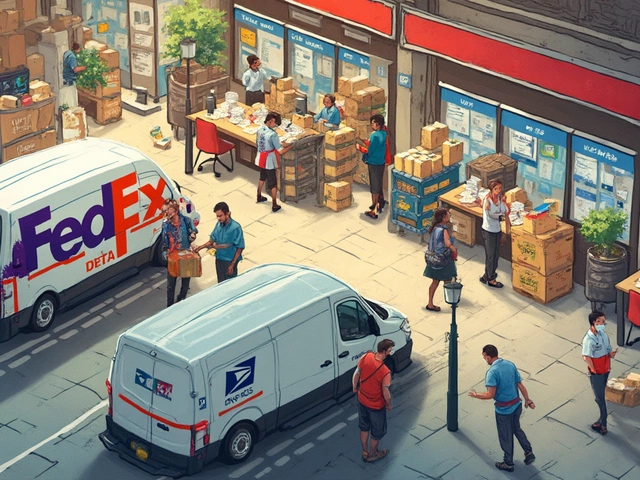E-commerce, in its simplest form, is the practice of buying and selling goods and services over the internet. It's a massive category, encompassing everything from small businesses selling handmade crafts to giant retailers moving vast quantities of products globally.
So, where does Amazon fit into all this? Well, Amazon isn't just a part of e-commerce; it's a major player that stands out for its incredible logistics network. Thanks to its robust distribution system, Amazon can deliver products at a speed that's mind-boggling. Seriously, you can order something in the morning, and it could arrive by evening!
- E-commerce Basics
- Amazon's Unique Role
- Logistics Powerhouse
- Navigating E-commerce
- Future of Online Shopping
E-commerce Basics
When we talk about e-commerce, we're diving into a huge market that has reshaped how we shop. E-commerce covers all sorts of online transactions, from buying groceries with a few taps on your phone to booking a vacation. It's not a new concept, but it's something that's become a daily part of our lives, especially after the boom in online shopping in recent years.
The roots of e-commerce go back to the 1970s when electronic data interchange (EDI) was developed. This laid the groundwork for companies to exchange data electronically. Then, fast forward to the 1990s, and the internet's public debut opened a whole new world of possibilities. Suddenly, businesses could reach customers directly through the web.
Key Features of E-commerce
There are a few standout features that define e-commerce:
- Accessibility: Consumers can shop 24/7 without geographical limitations. If you've ever ordered from an overseas store, you've experienced the global reach of e-commerce.
- Wide Product Range: The digital shelves of online stores often exceed those of physical stores. Whether you're looking for niche products or mainstream hits, you're likely to find them online.
- Customer Reviews: Online feedback has made it easier for buyers to make informed choices, which isn't something you always get with traditional shopping.
In 2023, global e-commerce sales surpassed $5 trillion, an impressive milestone that highlights its growing influence. With that kind of money flowing through, it's no wonder companies are investing heavily in their online presence.
Major Types of E-commerce
Understanding the different e-commerce models can help you navigate the online market better. Here are the main types:
- B2C (Business to Consumer): This is where a business sells directly to consumers, like buying a pair of shoes from an online retailer.
- B2B (Business to Business): Companies sell products or services to other companies. Think of a software vendor selling tools to a business.
- C2C (Consumer to Consumer): Platforms like eBay or Craigslist where consumers sell to each other.
With this foundation, you've got a basic handle on what e-commerce is all about. It's an exciting field that continues to evolve as technology advances and consumer preferences change.
Amazon's Unique Role
Amazon isn't your typical e-commerce site; it's a full-blown ecosystem. It started as an online bookstore back in 1994, but these days, you can find just about anything on Amazon. Their vast product range is only one part of what makes Amazon unique in the e-commerce world.
Logistics is where Amazon really stands out. The company has an insanely efficient distribution network, with fulfillment centers spread all around the globe. This network enables them to offer perks like two-day shipping for Prime members, which has set a new standard in online shopping.
Marketplace for Third-party Sellers
A huge part of Amazon's growth comes from its role as a marketplace for third-party sellers. They've built a platform that smaller businesses can use to sell their products to a massive customer base. In fact, about half of the goods sold on Amazon come from these third-party sellers.
Advanced Technology and Innovation
Amazon is also a leader in tech innovation. They've invested heavily in AI, using it to enhance everything from customer service with Alexa to product recommendations that seem almost psychic. Their logistics operations also use cutting-edge tech, including drones and automated warehouses.
Let’s take a look at how Amazon’s platform compares to others in a table format:
| Platform | Unique Feature |
|---|---|
| Amazon | Prime Shipping, Marketplace |
| eBay | Auction System |
| Alibaba | Wholesale Distribution |
This combination of a massive marketplace, rapid delivery, and technological prowess showcases Amazon’s unique role in the e-commerce landscape. They've changed how we think about purchasing goods and created expectations that other companies are still racing to meet.
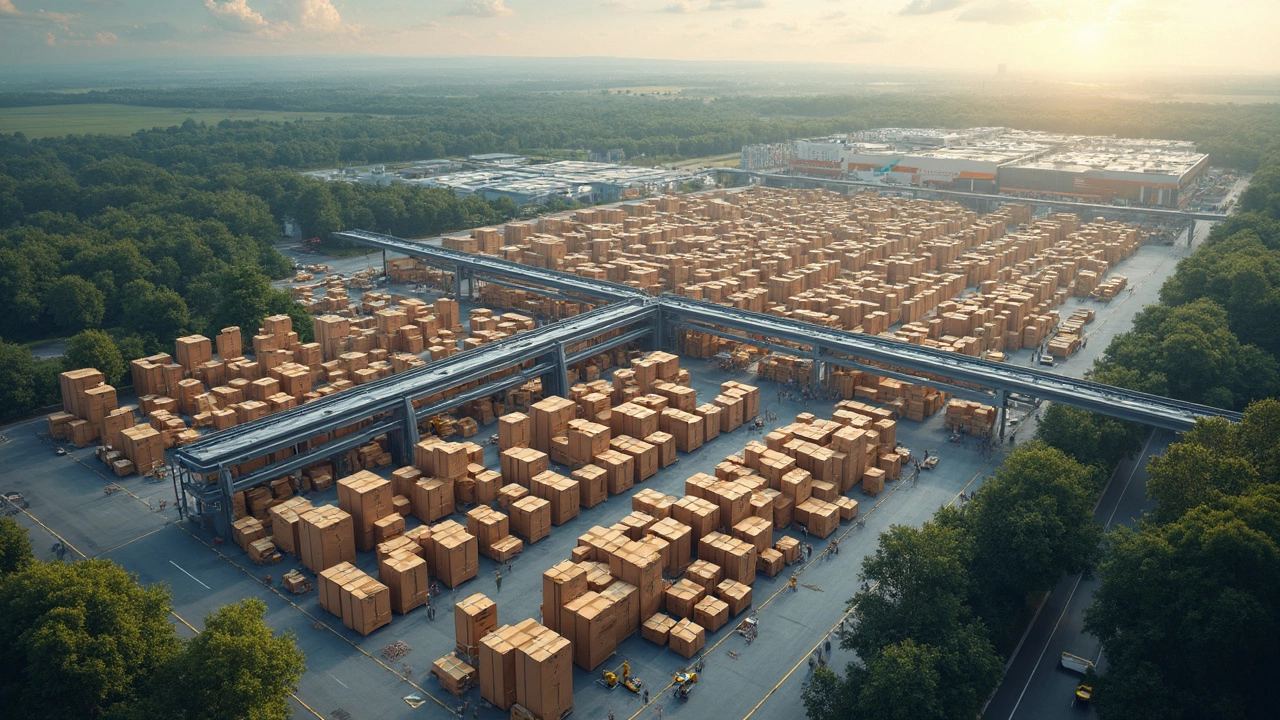
Logistics Powerhouse
When it comes to logistics, few do it better than Amazon. This isn't just about shipping packages; it's about creating a seamless, efficient system that anticipates customer needs even before they finalize their orders. Amazon's logistics network is a marvel, and it's a big reason they're a leader in e-commerce.
Amazon's logistics empire includes fulfillment centers, data-driven warehouses, and a fleet of delivery vehicles. They aren't relying on third-party services for everything; they've got their own planes and drones in the mix, aiming for faster delivery at every turn. Here's something wild: there are over 175 fulfillment centers worldwide! That's a network many smaller businesses can only dream of.
Amazon Prime: A Game Changer
Amazon Prime is like the secret sauce in their logistics recipe. With Prime, customers expect lightning-fast delivery. This service isn't just about free shipping—it's reshaped how people think about online buying expectations. This demands a well-oiled logistics machine ready to tackle high volumes and tight deadlines.
Technology and Innovation
But it's not just about having planes and warehouses. Amazon leans heavily into tech to keep things running smoothly. Their warehouses are tech-infused, with robots buzzing around to pick items and prepare them for shipping faster than a human could do alone.
Here's a taste of their focus on innovation: Amazon invested around $1 billion into robotics back in 2022. Why? To ensure their logistics chain stays top-notch. This means goods move at breakneck speed from shelf to truck, slashing the time from order to customer doorstep.
Navigating Logistics as a Small Business Owner
If you're a small business trying to make your name in e-commerce, understanding logistics is critical. While you might not replicate Amazon's scale, learning from their practices can be invaluable. Focus on efficiency, invest in tech where possible, and ensure your customer service handles mishaps with grace. It can set you apart.
Overall, Amazon's might in logistics is more than just size—it's their commitment to keeping things blazing fast while adapting to consumer demands swiftly. It's a model many strive towards in the complex dance of e-commerce logistics.
Navigating E-commerce
Jumping into the world of e-commerce might seem overwhelming at first, but it's not as tricky as it sounds. Let's break it down and make things easier for you. Whether you're a customer or a seller, understanding the basics will give you a head start.
For Shoppers
As a shopper, the first thing to decide is where you want to buy from. With countless online stores, including giants like Amazon, the options are endless. Amazon is often a go-to choice due to its huge variety of products and reliable delivery. You can read reviews, compare prices, and find deals easily.
One handy tip: use price comparison tools or browser extensions to ensure you're getting the best deal. And keep an eye out for flash sales and discount days like Black Friday or Prime Day—Amazon is famous for slashing prices during these events.
For Sellers
Now, if you're on the other side of the checkout counter, starting an online store can be daunting but rewarding. The platform you choose matters. Setting up shop on Amazon could give you instant access to millions of customers, but it also means competing with countless other sellers, often selling the same products.
Consider diversification. Don't put all your eggs in one basket. Sure, leveraging Amazon's massive reach is smart, but think about having your own website too. This way, you can build your brand and maintain more control over your business.
Logistics and Delivery
One of the biggest challenges in e-commerce logistics is making sure that your products get to the customers quickly and safely. Amazon has set a high bar with its Prime service, promising super-fast delivery. But remember, not every e-commerce setup will have Amazon's infrastructure, so always consider partnering with reliable logistics services.
Customer Service
Whether you're buying or selling, customer service is key. As a shopper, look for sellers with good return policies and positive feedback. As a seller, keep your customers happy with quick responses and fair policies. A happy customer often means repeat business, which is the goal!

Future of Online Shopping
The world of e-commerce is shifting faster than a teenager changes TikTok trends. With tech evolving at breakneck speed, online shopping is heading towards exciting horizons.
Rise of AI and Personalization
Get ready for shopping experiences that know you better than your best friend. AI isn't just a buzzword anymore; it's driving personalization like never before. Imagine landing on an Amazon page that showcases items you were just thinking about. Spooky or convenient?Drone Deliveries and Robotics
The dream of drones dropping packages at our doorsteps is inching closer to reality. Things like robotics in warehouses are making logistics smoother and faster, paving the way for even quicker deliveries. Picture this: ordering a pizza and getting it delivered via drone. The future is deliciously close.Eco-friendly Shopping
Sustainability is not just a trend; it's becoming a necessity. Online stores are increasingly adopting eco-friendly practices. Expect more green packaging and carbon-neutral delivery options. It's not just about shopping; it's about responsible shopping.All these changes are setting the stage for a future where online shopping feels as personal and reliable as your neighborhood store—but with way more options.
